In 1798 engineer John Carlysle Stewart, of Scotch-Irish heritage and from New Castle, Delaware, led a delegation to western Pennsylvania to survey the “donation lands” that had been granted to veterans of the Revolutionary War. He soon discovered approximately fifty acres of land at the confluence of the Shenango River and the Neshannock Creek, in then Allegheny County, that had been neglected in previous surveys. Stewart claimed the fifty-acre plot for himself and laid out what became the village of New Castle.
Carlysle centered his new settlement around a public square, which became popularly known as “The Diamond,” built on Washington Street where in intersects with Jefferson Street. Those main streets were named in honor of Revolutionary War hero and first U.S. President George Washington and prominent statesman and future third U.S. President Thomas Jefferson.
Over the next twenty years a town steadily sprung up around the public square as a handful of cabins, churches, mills, factories, and offices were erected. By 1825 the population of New Castle reached 300 people and steadily increased over the next fifty years. In April 1849 the county of Lawrence was carved out of Beaver and Mercer Counties and New Castle became its seat of government. New Castle, with a growing population of 6,000 people, achieved city status in 1869. As the city rapidly grew in the industrial-driven latter quarter of the century, surpassing 28,000 residents by 1900, the area around the public square remained the heart of the downtown area.
In May 1888, a prominent committee, known as the Lawrence County Soldiers Monument Association, was formerly organized with the goal of building a monument in the square to honor the 435 local men who died fighting in the “War of the Rebellion” (American Civil War). John S. Taggart was elected president of the committee, which went about raising funds over the next few years. Construction started on a large granite base in 1892, with plans to later add a statue of a lone Union soldier atop it. On Wednesday, December 15, 1897, the statue, fashioned by local artisan John Hart, and finally put it place as a large crowd of people looked on. The monument was officially dedicated during an impressive ceremony on Memorial Day, Monday, May 30, 1898.
A Civil War-era cannon, a plaque containing the Gettysburg Address, and other small monuments were added to the square in the coming years. The park was revamped in late 1960 when several towering trees (which where rotting) were removed and replaced with smaller trees and bushes. In April 1964, a large decorative fountain, known as the United Nations Fountain, was unveiled in the square.
Among the recognizable landmark structures that surround the modern day square include the First Christian Church, the MP Coney Island hot dog shop, the old Post Office building, the YMCA, and the Penn Power Building. Despite its importance the square has never really had an official name that has stuck too long. It was known as Pershing Square after the Great War (World War I) concluded in 1918 and Kennedy Square after U.S. President John F. “Jack” Kennedy’s assassination in 1963. Despite the various monikers ask any local resident about the park at the junction of Washington and Jefferson Streets and they will undoubtedly refer to it by one name and one name only: “The Diamond.”
To read an article from 1888 about the forming of the committee to build the monument click on: ASSOCIATION FORMED ARTICLE. To learn more about the plan for the monument and how the granite base was under construction in the fall of 1892 click on: MONUMENT PROGRESS ARTICLE. Apparently the granite company who was building the monument base was unhappy with some missed payments. To learn about how they brought suit against the committee in early 1895 click on: BROUGHT SUIT ARTICLE. To read about a musical and literary fundraiser for the monument fund given at the Leonard schoolhouse in 1895 click on: FUNDRAISER ARTICLE. Two short articles about the soldier statue appeared on the front page of the New Castle News on December 15, 1897. To read them click on: STATUE ARRIVES ARTICLE and SOLDIER IN PLACE ARTICLE. To read about why Joseph Trax, a Civil War veteran and leading supporter of the war’s history, was angry in May 1918 click on: COMPLAINT ARTICLE. In 1925 the original minutes and notes of the New Castle Library Association (from 1867 until 1892) were located and found to mention the founding of the monument association. To read a short article about that valuable find click on: LIBRARY MINUTES FOUND ARTICLE.
 The Soldiers Monument stands proud in the middle of the public square. The First Christian Church dominates the skyline in the background. (c1903) |
 A view of The Diamond from a 1910 postcard. |  A postcard showing The Diamond in 1911. An old streetcar is visible to the right. |
 An old postcard, with what appears to be a postmark from 1910, showing the rear of the Soldier’s Monument. Full Size |
 Flowerbeds at Kennedy Square. (May 1991) (Photo by John W. Hitch) Full Size |
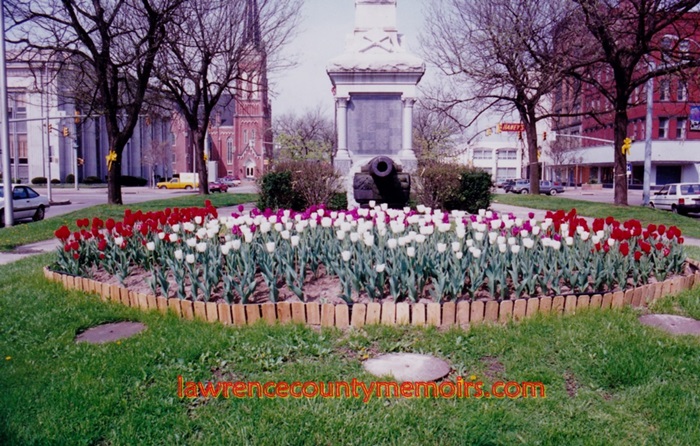 Springtime at Kennedy Square. (May 1991) (Photo by John W. Hitch) Full Size |
 (Dec 2011) Full Size |
 (Dec 2011) |  (Dec 2011) |
 (Mar 2013) |  (Mar 2013) |
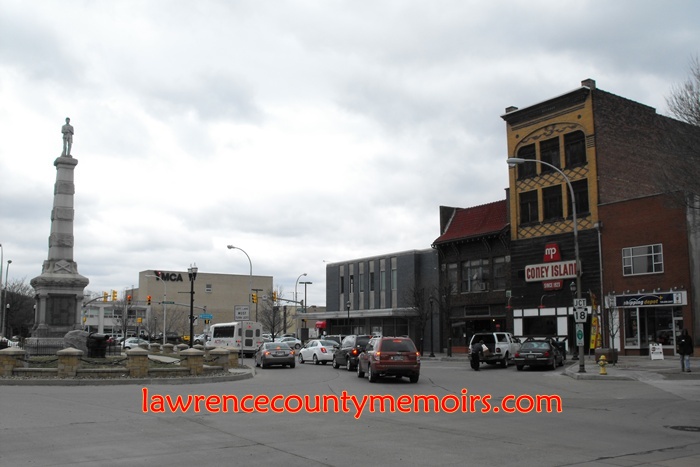 (Mar 2013) | 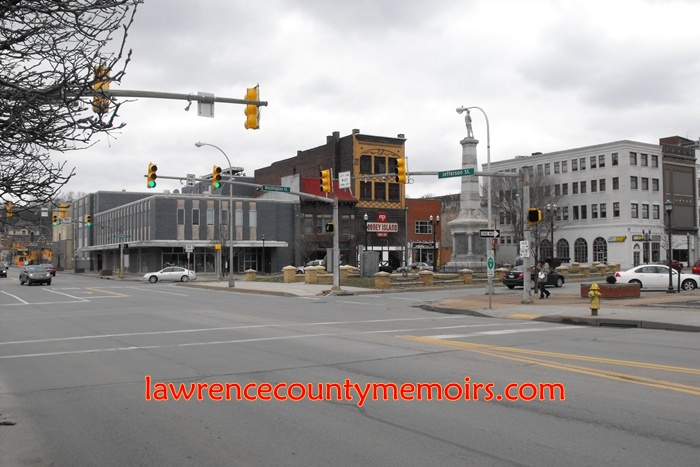 (Mar 2013) |
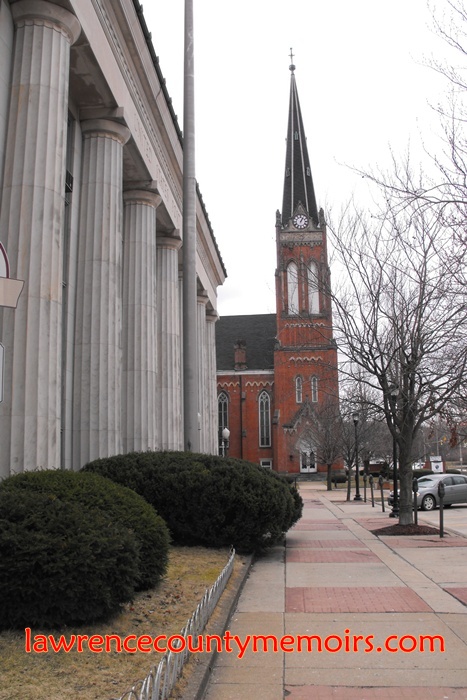 (Mar 2013) | 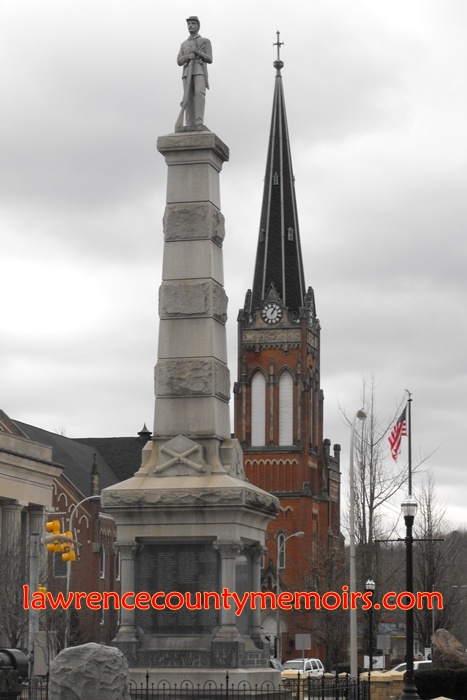 (Mar 2013) |
 (Mar 2013) Full Size |
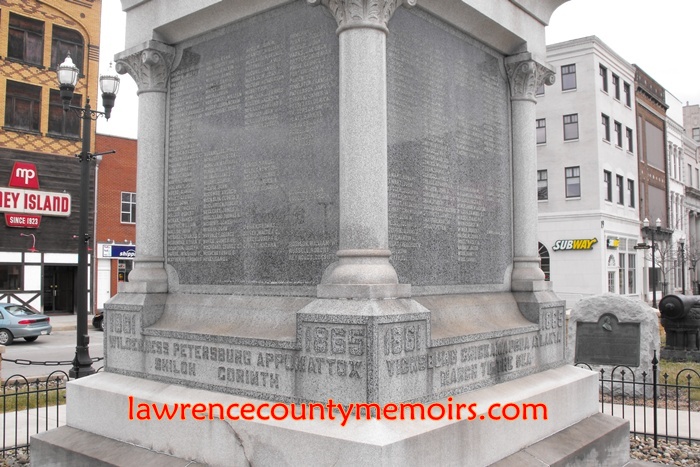 (Mar 2013) | 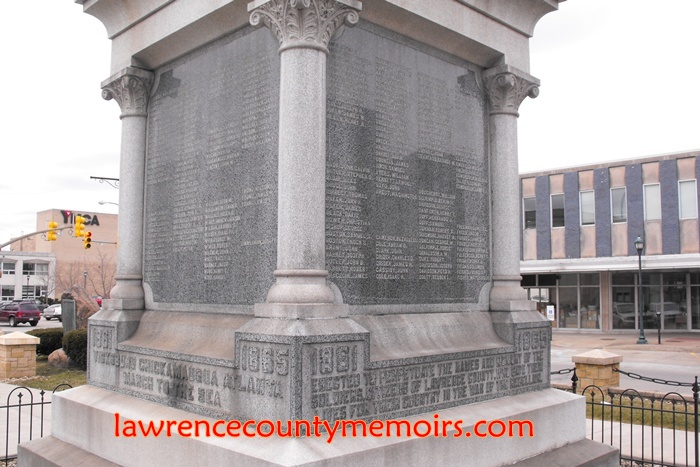 (Mar 2013) |
 (Mar 2013) | 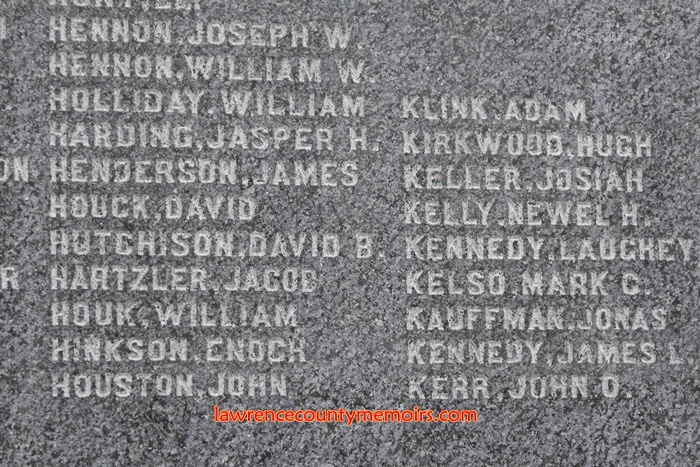 (Mar 2013) |
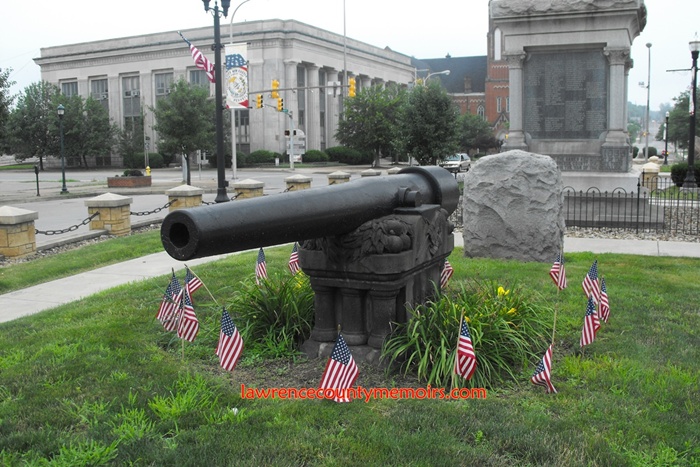 (Jul 2013) Full Size |
 (Jul 2013) | 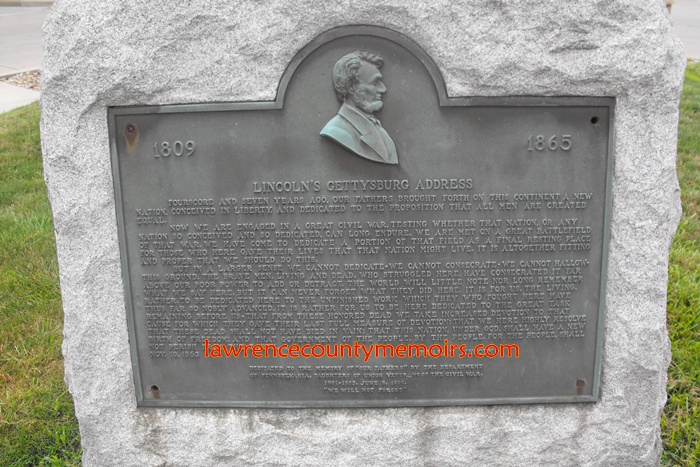 (Jul 2013) |
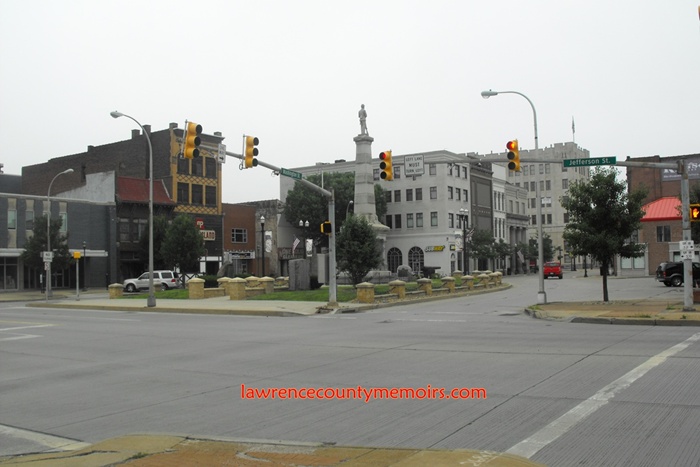 (Jul 2013) Full Size |
 (Jul 2013) | 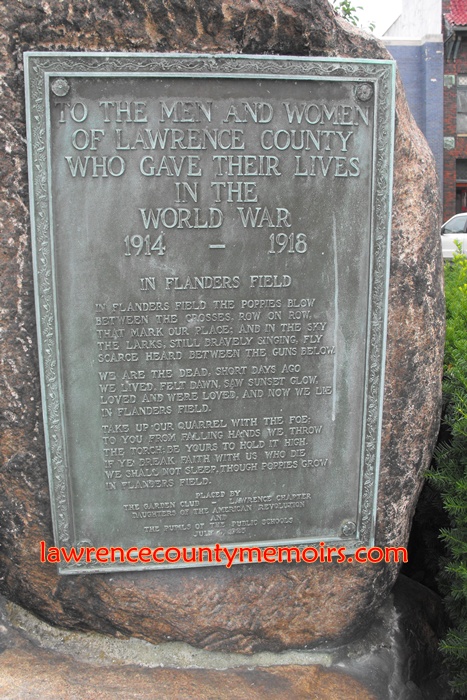 (Jul 2013) |
 (Jul 2013) Full Size |
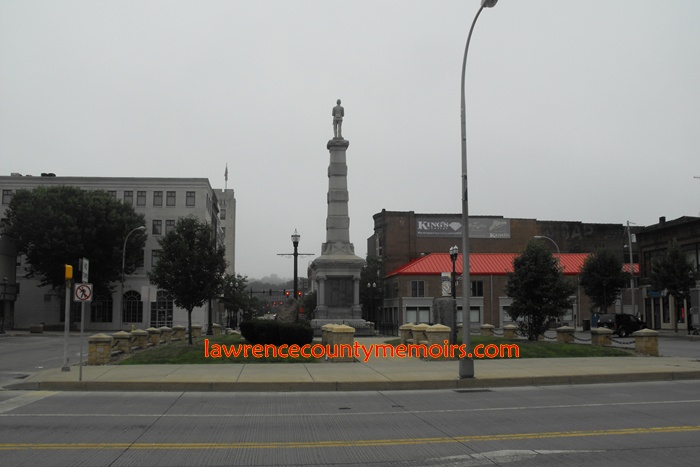 (Jul 2013) | 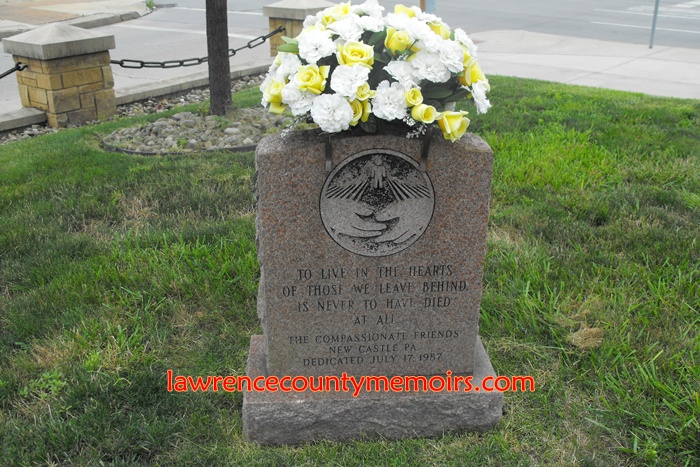 (Jul 2013) |




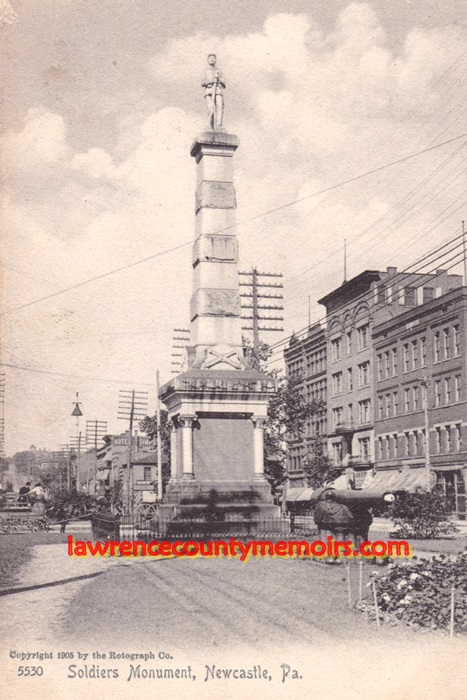





Comments
Lan Bingham #
Is the civil war soldier on the soldiers monument named?
John Morris #
In 1969 or 1970 I saw an unmaned 65 Chevy Impala crash into the fountain in the middle of a busy saturday afternoon. Seems the Driver lost his brakes on top of west Washington St. hill and baled out. Car missed everyone and everything all the way to the fountain, smashed into and over the edge. Miracle for sure. Heard the driver got seriously injured jumping out of the car. Ironicaly had he stayed with the car he would have probably not been hurt too bad.
Jeff Bales Jr #
(EDITOR’S NOTE) Lan, I don’t believe the soldier atop the monument is named, but I know that local man Charles H. Andrews posed for artisan John Hart when he carved the statue. Andrews was a local businessman who was well-known for serving as the Lawrence County Prothonotary and Clerk of the Court from 1906-1912. He passed away in July 1948 and is buried in Oak Park Cemetery. Jeff
James Peck #
My family lived on E Sheridan Ave in the early 1960’s. My brothers and sisters and I attended St Mary’s School. I remember the drive downtown along brick paved streets, hearing the sound the car tires would make. Then down the steep Highland Ave. We always looked forward to seeing the fountain at Kennedy Square especially at night when it was lit up with multi colored lights. I was only 6 yrs old but remember it like it was just yesterday.
Comment